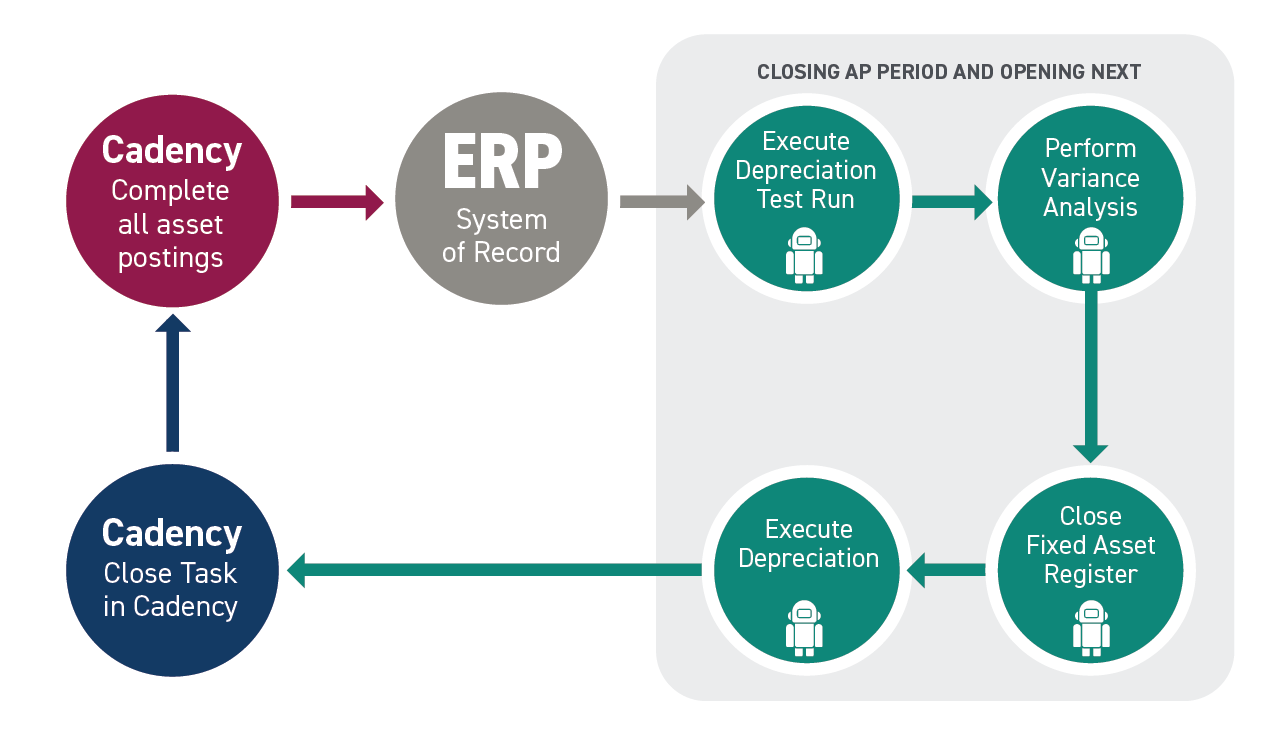System of Automation: ERP Bots
Blog post
Share
What is an ERP Bot and how does it help my financial System of Controls?
Over the last few years I have spoken with several of our customers, and there has been one consistent theme that stands out amongst them all – RPA. During these discussions customers typically fall into one these categories:
- Excited that RPA can help them decrease costs and improve quality via automation
- Unclear on what it means to code, implement and support RPA
- Testing RPA but with mixed ROI results (some great… some not so much)
Trintech has been a leader in the RPA space for several years, most recently cited by Gartner as ahead of it competition for our Risk Intelligent RPA™ functionality, and has taken this opportunity to help customers on this journey.
Through these discussions, many of our customers and partners have told us that our matching solutions, ERP connectors and other technologies are part of their RPA portfolios as they build out their RPA Center of Excellence. They also shared their frustration of having to develop (configure or code), maintain, test and support these RPA agents when they are outside of our Cadency solution as they work with their system of records, in particular their ERP, to drive increased value in their R2R transformation. With our customers’ needs driving our innovations, Trintech has developed and launched ERP Bots. ERP Bots are connected to Cadency via the ERP Connector for Journal Entry and/or the Close Action Plan Router (APR) and enable unique RPA workflows to be built, configured and supported by Trintech so that you are free of the R&D and IT burden.
Example of Trintech’s ERP Bots with Journal Entry Controls:
When an Intercompany Journal Entry transaction is posted to SAP®, the ERP Bot facilitates the posting to both the AP and AR sub-ledgers, including leveraging the SAP tax calculation logic as part of this posting and validating the AP and AR match even after tax regardless of tax treatment and then generates an invoice in SAP. As you can see, this takes the core System of Controls’ activity of raising the intercompany transaction, negotiating, approving and posting it and adds high-impact value by ensuring accuracy even after posting using SAP tax calculations and then drives cost reduction by automating the invoice creation.
Example of Trintech’s ERP Bots with Close Controls:
As a close task in Cadency is completed, you can leverage the Close APR to provide the highway between Cadency and SAP. The Trintech ERP Bot then automatically executes the depreciation test run, enabling a user to perform the variance analysis, and then automatically closes the fixed asset registry and executes the depreciation. These are also all updated in Cadency Close so you know this has been completed and you can feel confident in your reporting.

Trintech is excited to be bringing this innovation to the market in a way that leverages the customers’ system of record (ERP), their System of Controls (Cadency) and drives unique value via our Record to Report Automation Framework. This approach helps drive our ultimate goal reducing the risk and costs while increasing the effectiveness and efficiency of your overall financial close process.
Next, we will dive into Trintech’s Record to Report Framework Pillar 5 – Risk Intelligent RPA.
Written by: Michael Ross, Chief Product Officer at Trintech
Explore the Full 8-Part Series on Trintech’s Record to Report Automation Framework
Part 1 – How a System of Controls Can Move Your Financial Reporting from Flipping a Coin to a Sure Investment
Part 2 – How to Improve Controls, Reduce Risk and Lower Costs with a System of Accounting Intelligence
Part 3 – System of Integration: ERP Connectors
Part 4 – System of Integration: APIs
Part 6 – System of Automation: Risk Intelligent RPA
Part 7 – Financial Controls AI: Artificial Intelligence
Additional Resources:

